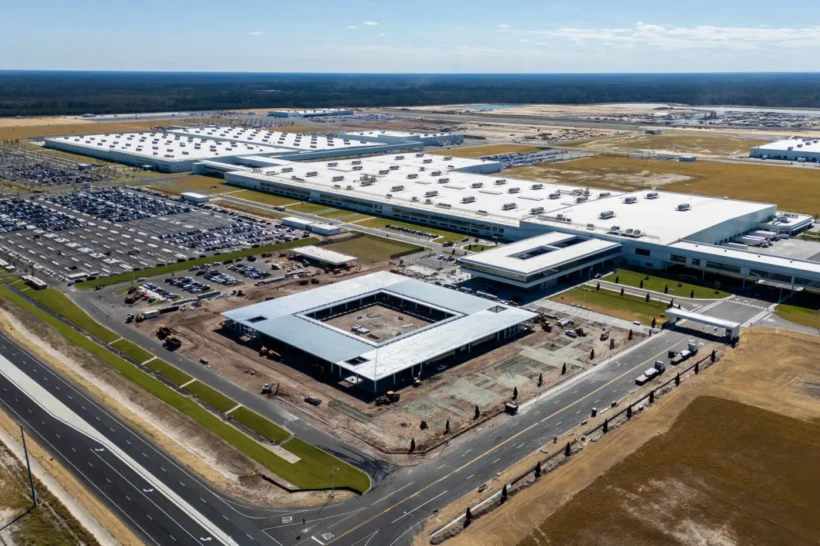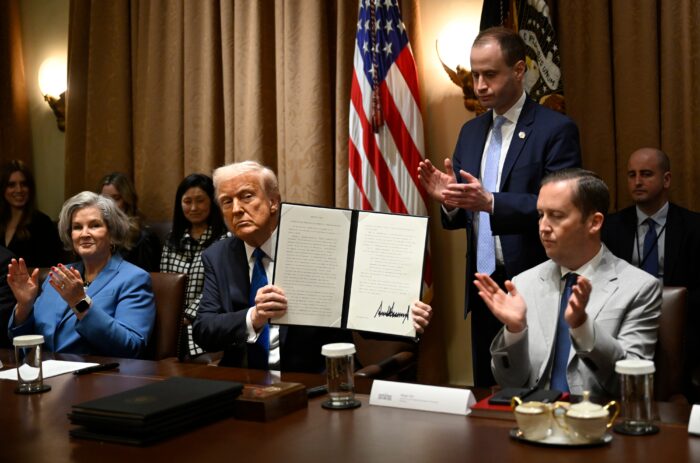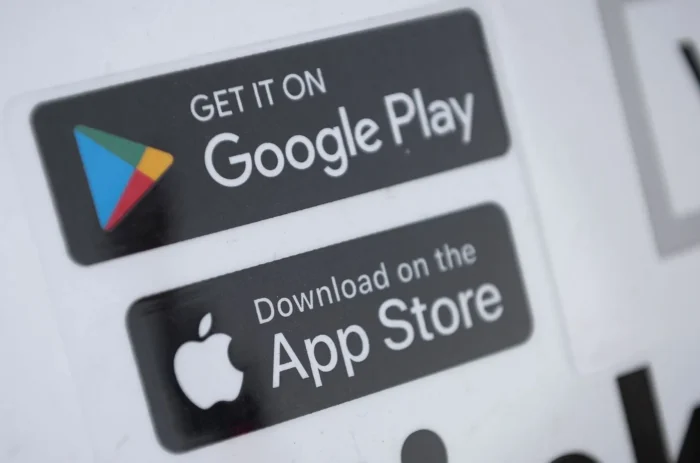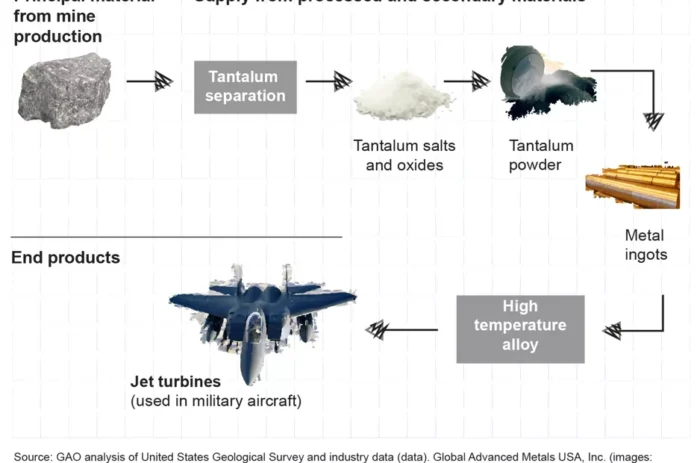
Hyundai's new $7.6B electric vehicle plant in Georgia
redo Jump to...
print Print...
(by Russ Bynum, Associated Press) — Hyundai celebrated the opening of its new $7.6 billion electric vehicle factory in Georgia on Wednesday by announcing plans to expand its production capacity by two-thirds to a total of 500,000 vehicles per year.
The news came as President Donald Trump announced 25% tariffs on auto imports at the White House. Hyundai will be spared from those tariffs on its U.S.-made vehicles. Trump praised the South Korean automaker on Monday, saying its American investments are “a clear demonstration that tariffs very strongly work.”
Hyundai began producing EVs just shy of six months ago at its sprawling manufacturing plant in southeast Georgia. More than 1,200 people are working there.
With employees in blue shirts filling bleachers behind him Wednesday, Hyundai Motor Group Executive Chairman Euisun Chung said the company plans to increase the plant’s capacity from 300,000 vehicles per year to 500,000. He said it shows Hyundai has come to Georgia “to stay, to invest and to grow.”
“Standing here today, I can say I have never been more confident about building the future of mobility with America, in America,” Chung said.
Hyundai Motor Company CEO Jose Munoz said the Georgia expansion was “like building a new plant.”
“This plant couldn’t come at a better time than now,” Munoz told reporters, “because definitely all the cars that we would produce here are going to be exempted from any tariffs.”
Hyundai employees worked the assembly line Wednesday alongside hundreds of robots that stamp sheets of steel into fenders and door panels, weld and paint auto bodies and even park finished vehicles awaiting their final inspections.
The plant that sprawls across 3,000 acres [produces] a finished vehicle about once a minute. Its 1,200 workers are currently producing two electric SUV models — the Ioniq 5 and the larger Ioniq 9 set for release this spring. Hyundai also plans for the plant to make hybrids, which Munoz predicted will eventually make up one-third of the vehicles produced there.
The newly announced Georgia expansion is part of $21 billion in U.S. investments over the next three years that Hyundai announced at the White House with Trump on Monday. They also include a $5.8 billion steel mill in Louisiana to produce auto parts for Hyundai’s assembly plants in Georgia and Alabama.
Chung told Trump at the White House: “We are really proud to stand with you and proud to build the future together.”
Before the expansion was announced, Hyundai said it planned to employ 8,500 total workers at the Bryan County site, about 50 miles west of Savannah. Two partners making batteries at the site are expected to add another 3,500 workers.
Hyundai hasn’t said how many additional workers would be needed to increase capacity by 200,000 vehicles per year.
During the first half of 2024, the Ioniq 5 was America’s second-best-selling electric vehicle not made by industry leader Tesla.
Hyundai took less than two years to start making EVs in Georgia after breaking ground in the fall of 2022. It was the largest economic development project the state had ever seen, and it came with a whopping $2.1 billion in tax breaks and other incentives from the state and local governments.
EVs accounted for 8.1% of new vehicle sales in the U.S. last year, up from 7.9% in 2023, according to Motorintelligence[.]com.
Published at WSB-TV 2 Atlanta from an AP report on March 27. Reprinted here for educational purposes only. May not be reproduced on other websites without permission.
Questions
NOTE: Before answering the questions, read the “Background” and watch the videos under “Resources” below.
1. The first paragraph of a news article should answer the questions who, what, where and when. List the who, what, where and when of this news item. (NOTE: The remainder of a news article provides details on the why and/or how.)
2. a) How many people are currently employed in Hyundai’s Georgia plant?
b) How many people does Hyundai expect to employ at this Georgia plant?
3. By how many vehicles will Hyundai increase output in their Georgia plant?
4. a) In the FoxBusiness interview below, what does Hyundai Motor Company CEO Jose Munoz say Hyundai did during President Trump’s first term in office?
b) Why is Mr. Munoz happy that Hyundai has such a large (and expanding) plant in the U.S.?
5. a) What vehicles are being produced by Hyundai at the Georgia plant?
b) What else does Hyundai produce in addition to cars – in what state? (2:45 in the video) (para. 10)
6. How much will Hyundai invest in the U.S. over the next three years?
7. Read the “Background” below the questions.
What is your reaction to President Trump’s plan to boost U.S. manufacturing and the economy – bringing jobs and investments to the U.S.?
Background
Hyundai Motor Group acquired a controlling interest in Boston Dynamics, the robotics company known for robots like Spot and Atlas, in December 2020, with the acquisition completed in June 2021.
Hyundai reportedly spent approximately one billion dollars to buy Boston Dynamics. It was the third time in seven years that Boston Dynamics was sold — first to Google, then SoftBank, and now Hyundai — even though it’s not profitable.
“This isn’t about profits in the short term,” said Craig Le Clair, an artificial intelligence and automation analyst at Forrester Research. “This is about what will this type of automation look like in five years?”
NOTE: South Korea does not charge U.S. automakers tariffs on American cars sold to South Korea.
From a Grok search “why is trump imposing tariffs on south korea if they don’t impose any on u.s.”:
- The real drivers behind Trump’s tariffs seem to be twofold. First, he’s targeting South Korea’s significant trade surplus with the U.S., which hit $55.7 billion in 2024. Autos are a big chunk of this—South Korea exported $66 billion in vehicles to the U.S. in 2023 alone, per industry estimates, while the U.S. exports far less in return.
- Trump frames this imbalance as unfair, arguing that countries like South Korea benefit disproportionately from U.S. markets and military support (with 28,500 U.S. troops stationed there).
- Second, his “America First” agenda prioritizes domestic manufacturing, especially in sectors like autos and steel, where he’s promised tariffs to boost U.S. production. On March 24, 2025, he signaled auto tariffs were imminent, potentially hitting South Korea hard despite their zero-tariff stance on U.S. cars.
- South Korea’s response has been to highlight KORUS [the U.S.-Korea Free Trade Agreement] benefits and push for exemptions, citing investments like Hyundai’s $21 billion U.S. manufacturing pledge announced in March 2025. They argue their tariffs on U.S. goods are effectively negligible under the FTA.
- Yet Trump’s approach isn’t strictly about matching tariffs—it’s about leveraging U.S. market power to extract concessions, reduce trade deficits, or pressure allies on issues like defense costs. He’s also hinted at “reciprocal tariffs” starting April 2, 2025, which could target South Korea not for its auto tariffs (which are zero) but for … imbalances elsewhere, like steel or semiconductors.
- So, even though South Korea doesn’t impose auto tariffs on the U.S., Trump’s policy isn’t just about that. It’s about a bigger economic and geopolitical play—using tariffs as a tool to reshape trade dynamics, protect U.S. industries, and maybe even nudge South Korea into further economic or strategic alignment. Whether this holds up under scrutiny (given KORUS data) or risks alienating an ally amid tensions with China and North Korea is another question.
- [Grok AI should have noted that the U.S. and South Korea have a Mutual Defense Treaty, signed in 1953, which obligates the U.S. to provide mutual aid if South Korea faces external armed attack. Would they risk alienating the U.S.?].
Resources
Watch a March 26, 2025 ABC WJCL22 report from Savannah, Georgia:
Watch a March 27, 2025 CNBC report:
Watch a March 26, 2025 FoxBusiness interview with Hyundai Motor Company CEO Jose Munoz:
Watch the March 24, 2025 announcement of Hyundai’s plan to build a US steel plant:
Daily “Answers” emails are provided for Daily News Articles, Tuesday’s World Events and Friday’s News Quiz.



